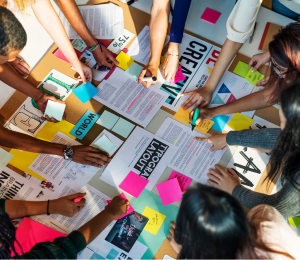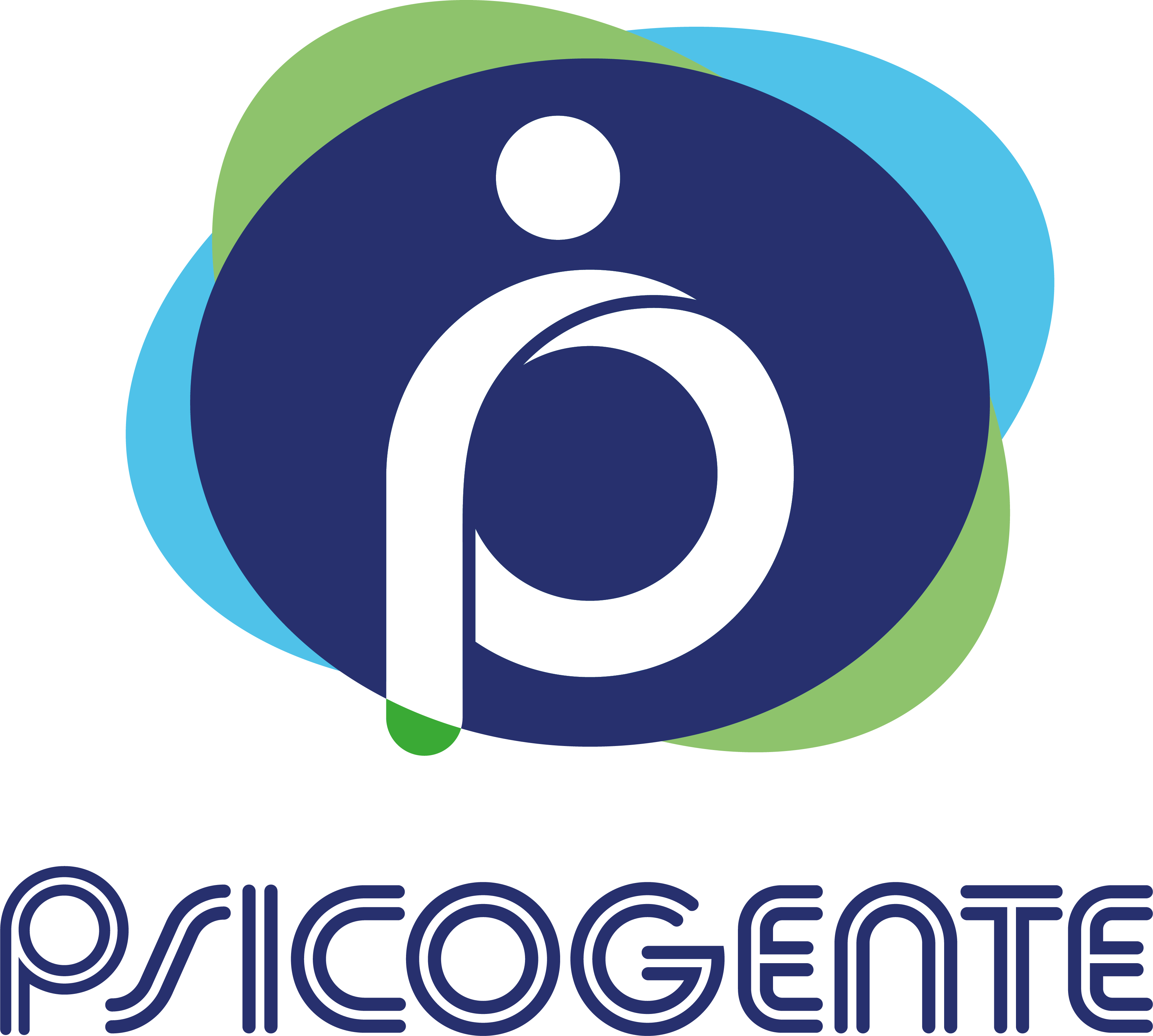Análisis de publicaciones psicológicas científicas con métodos cualitativos sobre lesiones deportivas
Analysis of scientific psychological publications with qualitative methods on sports injuries
DOI:
https://doi.org/10.17081/psico.28.53.7210Palabras clave:
lesiones deportivas, intervención psicosocial, estudios cienciométricosResumen
Objetivo: Realizar una revisión documental de publicaciones científicas que utilicen metodología cualitativa, que a su vez aborden la temática de intervenciones psicológicas en lesiones deportivas.
Método: Se llevó a cabo un análisis cienciométrico en cinco etapas: recuperación, migración, análisis, visualización e interpretación, utilizando la base de datos SCOPUS como principal fuente de información.
Resultados: Se identificaron un total de 63 artículos, la mayoría provenientes de Estados Unidos, seguidos por Reino Unido y Canadá. Respecto a la temporalidad, el año con mayor auge en el uso de la metodología cualitativa para analizar estas variables fue en el 2019, no obstante, en 2002 se comenzaron los primeros estudios.
Conclusiones: Existe una limitada producción científica cualitativa que aborde las intervenciones psicológicas en lesiones deportivas.
Descargas
Citas
Almeida, P., Luciano, R., Lameiras, J, & Buceta, J. (2014). Beneficios percibidos de las lesiones deportivas: Estudio cualitativo en futbolistas profesionales y semiprofesionales. Revista de Psicología del Deporte, 23(2), 457-464
Alvarado, V., Ruiz, B., & Rodríguez, M. C. (2018). Lesiones musculoesqueléticas en mujeres adultas sedentarias que ingresan a un programa de ejercicio físico. Enfermería Universitaria, 8(1), 33–40. https://doi.org/10.22201/eneo.23958421e.2011.1.271
Analytis P., McKay A., Hamilton M., Williams G., Warren N. & Pon J. (2018) Physical activity: perceptions of people with severe traumatic brain injury living in the community, Brain Injury, 32 (2), 209-217. https://doi.org/10.1080/02699052.2017.1395479
Anguera M.T. & Hernández-Mendo, A. (2016) Avances en estudios observacionales de ciencias del deporte desde los mixed methods. Cuadernos de Psicología del Deporte, 16(1), 17-30.
Arvinen-Barrow, M., Clement, D., Hamson-Utley, J., Zakrajsek, R., Lee, S., Kamphoff, C., Lintunen, T., Hemmings, B., & Martin, S. (2015) Athletes’ use of mental skills during sport injury rehabilitation. Journal of Sport Rehabilitation, 24, 189-197.
Arvinen-Barrow, M., DeGrave, K., Pack, S., & Hemmings, B.J. (2019). Transitioning Out of Professional Sport: The Psychosocial Impact of Career-Ending Non-Musculoskeletal Injuries Among Male Cricketers From England and Wales. Journal of Clinical Sport Psychology, 13, 629-644.
Arvinen-Barrow, M., Massey, W. V., & Hemmings, B. (2014). Role of sport medicine professionals in addressing psychosocial aspects of sport-injury rehabilitation: professional athletes' views. Journal of athletic training, 49(6), 764–772. https://doi.org/10.4085/1062-6050-49.3.44
Andersen, M.S. (2007). The role of sports psychology in injury rehabilitation. International journal of sport and exercise psychology, 5(1), 89-103.
Badenhorst, M., Verhagen, E., Lambert, M., van Mechelen, W., & Brown, J. (2019). When This Happens, You Want the Best Care: Players' Experiences of Barriers and Facilitators of the Immediate Management of Rugby-Related Acute Spinal Cord Injury. Qualitative health research, 29(13), 1862–1876. https://doi.org/10.1177/1049732319834930
Bardhan, S., & Nimkar N. (2020) Psychological barriers of young athletes and importance of sports psychologist in youth sports. Annals of Tropical Medicine and Public Health, 23(17). https://doi.org/10.36295/ASRO.2020.231747
Bargoria V., Timpka T., Jacobsson J., Halje K., Andersson C., Andersson G., & Bermon S. (2020) Running for your life: A qualitative study of champion long-distance runners’ strategies to sustain excellence in performance and health. Journal of Science and Medicine in Sport, 23(8), 715-720. https://doi.org/10.1016/j.jsams.2020.01.008
Ball, S.L. (2012). The role of psychological interventions in the rehabilitation of athletes. Journal of Clinical Sport Psychology, 6 (3), 241-258.
Becerra, S. (2016). Descripción de las conductas de salud en un grupo de estudiantes universitarios de Lima. Revista De Psicología, 34(2), 239-260. https://doi.org/10.18800/psico.201602.001
Bejar, M. P., Raabe, J., Zakrajsek, R. A., Fisher, L. A., & Clement, D. (2019). Athletic trainers' influence on national collegiate athletic association division I athletes' basic psychological needs during sport injury rehabilitation. Journal of Athletic Training, 54(3), 245-254.
Bennett, H. R., Czech, D., Harris, B., & Todd, S. (2016). Perceptions of coping with an injury in sport at the NCAA Division I level: Perceptual continuity between student athletes and their athletic trainers. Clinical Kinesiology, 70(4), 39-43.
Berengüí, R., López, J., Garcés de Los Fayos, E., & Almarcha, J. (2011). Factores psicológicos y lesiones deportivas en lucha olímpica y taekwondo. E-Balonmano.Com: Revista de Ciencias del Deporte, 7, 91–98.
Berengüí, R., Ortín, F.J., Garcés de Los Fayos, E.J., & Hidalgo, M.D. (2017) Personalidad y lesiones en el alto rendimiento deportivo en modalidades individuales. Revista Iberoamericana de Psicología del Ejercicio y el Deporte, 12(1), 15-22.
Bevilacqua Z., Cothran D.J., Rettke D.J., Koceja D.M., Nelson-Laird T.F., & Kawata K. (2021) Educator perspectives on concussion management in the college classroom: A grounded theory introduction to collegiate return-to-learn, BMJ Open, 11(4). https://doi.org/10.1136/bmjopen-2020-044487
Boudreau, L.M.E. & Brewer, B.W. (2016). Qualitative research in sport injury rehabilitation. Journal of Sport Psychology, 27 (2), 140-158.
Bolling C., Delfino S., Van Mechelen W., & Pasman H.R. (2020) Letting the cat out of the bag: Athletes, coaches and physiotherapists share their perspectives on injury prevention in elite sports. British Journal of Sports Medicine, 54(14), 871-877. https://doi.org/10.1136/bjsports-2019-100773
Bonell Monsonís O., Verhagen E., Kaux J.-F., & Bolling C. (2021). 'I always considered i needed injury prevention to become an elite athlete': The road to the Olympics from the athlete and staff perspective. BMJ Open Sport and Exercise Medicine, 7(4). https://doi.org/10.1136/bmjsem-2021-001217
Burland, J. P., Toonstra, J., Werner, J. L., Mattacola, C. G., Howell, D. M., & Howard, J. S. (2018). Decision to Return to Sport After Anterior Cruciate Ligament Reconstruction, Part I: A Qualitative Investigation of Psychosocial Factors. Journal of athletic training, 53(5), 452–463. https://doi.org/10.4085/1062-6050-313-16
Campbell A., Plourde V., Hartling L., & Scott S.D. (2022). “You Can't Fix Your Brain”: Exploring concussion experiences of children and parents. Journal for Specialists in Pediatric Nursing, 27(1) https://doi.org/10.1111/jspn.12357
Cardona-Román, D. M., & Sánchez-Torres, j. M. (2017) Análisis cienciométrico de la producción científica acerca de la investigación sobre la evaluación de la implementación del e-learning en el periodo 2000-2015. Educación, 27(51), 7-34. https://doi.org/10.18800/educacion.201702.001
Cassaretto, M., Chau, C., Oblitas, H., & Valdéz, N. (2003). Estrés y afrontamiento en estudiantes de psicología. Revista de Psicología, 21(2), 363-392. https://doi.org/10.18800/psico.200302.006
Cayrol T., Godfrey E., Draper-Rodi J., & Bearne L. (2019) Exploring professional Circus artists' experience of performance-related injury and management: A qualitative study. Medical Problems of Performing Artists, 34(1). 14-24. https://doi.org/10.21091/mppa.2019.1004.
Chaverra B.E., Gaviria D.F.& González E.V. (2019) El estudio de caso como alternativa metodológica en la investigación en educación física, deporte y actividad física. Conceptualización y aplicación. Retos, 35. 422-427. https://doi.org/10.47197/retos.v0i35.60168
Cheong M.J., Jeon B., & Noh S.-E. (2020) A protocol for systematic review and meta-analysis on psychosocial factors related to rehabilitation motivation of stroke patients. Medicine, 99(52), e23727. https://doi.org/10.1097/MD.0000000000023727.
Clement D., Arvinen-Barrow M., & Fetty T. (2015) Psychosocial responses during different phases of sport-injury rehabilitation: A qualitative study. Journal of Athletic Training, 50(1). 95-104. https://doi.org/10.4085/1062-6050-49.3.52.
Comper P., Hutchison M., Magrys S., Mainwaring L., & Richards D. (2010) Evaluating the methodological quality of sports neuropsychology concussion research: A systematic review. Brain Injury, 24(11), 1257-1271. https://doi.org/10.3109/02699052.2010.506854
Côté-Leclerc F., Boileau Duchesne G., Bolduc P., Gélinas-Lafrenière A., Santerre C., Desrosiers J., & Levasseur M. (2017) How does playing adapted sports affect quality of life of people with mobility limitations? Results from a mixed-method sequential explanatory study. Health and Quality of Life Outcomes, 15(22). https://doi.org/10.1186/s12955-017-0597-9.
Crossman, J. (2015). Qualitative investigation into the psychosocial impact of a sports injury. Journal of Sport Psychology in Action, 6 (3), 175-185.
Cusimano MD, Topolovec-Vranic J, Zhang S, Mullen, S., Wong, M. & Ilie, G. (2017) Factors Influencing the Underreporting of Concussion in Sports: A Qualitative Study of Minor Hockey Participants. Clinical Journal of Sport Medicine, Official Journal of the Canadian Academy of Sport Medicine. 27(4):375-380. https://doi.org/10.1097/jsm.0000000000000372. PMID: 28653965
Driediger, M., Hall, C., & Callow, N. (2006). Imagery use by injured athletes: a qualitative analysis. Journal of sports sciences, 24(3), 261–271. https://doi.org/10.1080/02640410500128221
Dube C. E., Lapane K.L., Ferrucci K.A., Beccia A.L., Khan S.K., Yi E., Kay J., Kuhn K.A., Ogdie A., & Liu S.-H. (2021). Personal Experiences with Diagnostic Delay Among Axial Spondyloarthritis Patients: A Qualitative Study. Rheumatology and Therapy, 8(2), 1015-1030. https://doi.org/10.1007/s40744-021-00321-z
Ezzat A.M., Brussoni M., Whittaker J.L. & Emery C.A. (2018) A qualitative investigation of the attitudes and beliefs about physical activity and post-traumatic osteoarthritis in young adults 3-10 years after an intra-articular knee injury. Physical Therapy in Sport : Official Journal of the Association of Chartered Physiotherapists in Sports Medicine. 32, 98-108. https://doi.org/10.1016/j.ptsp.2018.05.001.
González-Reyes, A. A., Moo, J., & Olmedilla, A. (2017). Características psicológicas que influyen en las lesiones deportivas de triatletas amateurs de Yucatán, México. Revista de Psicologia del Deporte, 26, 71–77.
Goraczko A., Zurek G., Lachowicz M., Kujawa K., Blach W., & Zurek A. (2020) Quality of life after spinal cord injury: A multiple case study examination of elite athletes. International Journal of Environmental Research and Public Health, 17(20), 1-10. https://doi.org/10.3390/ijerph17207437
Gould, D., & Udry, E. (1994) Psychological skills for recovering from athletic injury. Journal of Sport and Exercise Psychology, 16(4), 242-258.
Hemmings, B., & Povey, L. (2002). Views of chartered physiotherapists on the psychological content of their practice: a preliminary study in the United Kingdom. British journal of sports medicine, 36(1), 61–64. https://doi.org/10.1136/bjsm.36.1.61
Hernández-Sampieri, R. & Mendoza, C (2018). Metodología de la investigación. Las rutas cuantitativa, cualitativa y mixta. México: Editorial Mc Graw Hill Education.
Hirst R.B., Haas A.L., Teague A.M., Whittington L.T., & Taylor E. (2019) Bell Ringers: Factors Related to Concussive Events in Children Playing Tackle Football. Journal of Pediatric Health Care, 33(1), 14-15. https://doi.org/10.1016/j.pedhc.2018.05.009
Hodges A., & Ameringer S. (2019) The symptom experience of adolescents with concussion. Journal for Specialists in Pediatric Nursing. 24(4). https://doi.org/10.1111/jspn.12271
Johnson, U., Ivarsson, A., Karlsson, J., Hägglund, M., Waldén, M., & Bórjesson, M. (2016) Rehabilitation after first-time anterior cruciate ligament injury and reconstruction in female football players: a study of resilience factors. Sport Science, Medicine and Rehabilitation, 8(20). https://doi.org/10.1186/s13102-016-0046-9
Johnston T.E., Close J., Jamora P., & Wainwright S.F. (2020) Perceptions of risk for stress fractures: A qualitative study of female runners with and without stress fracture histories. Physical Therapy in Sport, 43, 143-150. https://doi.org/10.1016/j.ptsp.2020.02.018
Kleinert, J., & Liesenfeld, M. (2002). Betreuer-Sportler-Interaktionen nach Sportverletzungen im professionellen Hallenhandball: Eine Interviewstudie. Schweizerische Zeitschrift für Sportmedizin und Sporttraumatologie, 50(2), S. 77-84. http://www.sgsm.ch/ssms_publication/file/103/07-2002-2.pdf
Kox, L. S., Opperman, J., Kuijer, P. P. F. M., Kerkhoffs, G. M. M. J., Maas, M., & Frings-Dresen, M. H. W. (2019). A hidden mismatch between experiences of young athletes with overuse injuries of the wrist and sports physicians' perceptions: a focus group study. BMC musculoskeletal disorders, 20(1), 235. Article 235. https://doi.org/10.1186/s12891-019-2616-y
Lacey, A., Whyte, E., O’Keeffe, S., O’Connor, S., Burke, A., Moran, K. (2023) the running injury continuum: A qualitative examination of recreational runners’ description and management of injury. PLOS ONE, 18(10) https://doi.org/10.1371/journal.pone.0292369
Lacy, A. M., Singe, S. M., & Bowman, T. G. (2020). Collegiate Athletic Trainers' Experiences With External Pressures Faced During Decision Making. Journal of athletic training, 55(4), 409–415. https://doi.org/10.4085/1062-6050-165-19
Lee A.S.Y., Standage M., Hagger M.S., & Chan D.K.C. (2019). Sport injury prevention in-school and out-of school? A qualitative investigation of the trans-contextual model. PLoS ONE, 14(9), https://doi.org/10.1371/journal.pone.0222015
Leung R., Malliaropoulos N., Korakakis V., & Padhiar N. (2018) What are patients' knowledge, expectation and experience of radial extracorporeal shockwave therapy for the treatment of their tendinopathies? A qualitative study. Journal of Foot and Ankle Research, 11(1). https://doi.org/10.1186/s13047-018-0254-5
Levine O., Terry M., & Tjong V. (2022) The Collegiate Athlete Perspective on Return to Sport Amidst the COVID-19 Pandemic: A Qualitative Assessment of Confidence, Stress, and Coping Strategies. International Journal of Environmental Research and Public Health, 19(11). https://doi.org/10.3390/ijerph19116885
Lininger M.R., Wayment H.A., Craig D.I., Huffman A.H. & Lane T.S. (2019) Improving Concussion-Reporting Behavior in National Collegiate Athletic Association Division I Football Players: Evidence for the Applicability of the Socioecological Model for Athletic Trainers. J Athl Train. 54(1), 21-29. https://doi.org/10.4085/1062-6050-47-18
López, L., Rodríguez, I., & Palacios, A. (2017). Incidencia de lesiones deportivas en jugadores y jugadoras de baloncesto amateur. Revista Internacional de Medicina y Ciencias de la Actividad Física y el Deporte, 17(66), 299-316. https://doi.org/10.15366/rimcafd2017.66.006
Lubega S.K., Makubuya T., Muwonge H., & Lambert M. (2021) A descriptive prospective study of sports medicine practices for athletes in Uganda. African Health Sciences, 21(2), 826-834. https://doi.org/10.4314/ahs.v21i2.43
Martínez-de-Quel-Pérez, Ó., Sánchez-Moreno, A., Zamorano-Feijóo, C. & Ayán-Pérez, C. (2019). Epidemiología lesional en actividades escolares y extraescolares en la Comunidad de Madrid (España). Revista Internacional de Medicina y Ciencias de la Actividad Física y el Deporte, 19(73),151-166. https://doi.org/10.15366/rimcafd2019.73.011
Matus, E., Molino, J., & Matus, L. (2019). The effect of a psychological intervention program on the sports motivation of soccer players. Revista Iberoamericana de Psicología del Ejercicio y el Deporte, 15(1), 1.
McGlashan, A., Verrinder, G., & Verhagen, E. (2018). Working towards More Effective Implementation, Dissemination and Scale-Up of Lower-Limb Injury-Prevention Programs: Insights from Community Australian Football Coaches. International journal of environmental research and public health, 15(2), 351. https://doi.org/10.3390/ijerph15020351
Michán, L. & Muñoz-Velasco, I. (2013) Cienciometría para ciencias médicas: definiciones, aplicaciones y perspectivas. Investigación en Educación Médica. 2(6), 100-106
Mitchell, I., Evans, L., Rees, T., & Hardy, L. (2014). Stressors, social support, and tests of the buffering hypothesis: effects on psychological responses of injured athletes. British journal of health psychology, 19(3), 486–508. https://doi.org/10.1111/bjhp.12046
Miyahira J. (2013) Publicación científica. Revista Médica Herediana. 9(1), 1. https://doi.org/10.20453/rmh.v9i1.561
Molina P., Villamón M. & Úbeda J. (2015) La investigación cualitativa en las revistas españolas de ciencias del deporte (2007-2011). Revista de Psicología del Deporte, 24(1). 29-36.
Møller M., Zebis M.K., Myklebust G., Lind M., Wedderkopp N., & Bekker S. (2021). “Is it fun and does it enhance my performance?” – Key implementation considerations for injury prevention programs in youth handball. Journal of Science and Medicine in Sport, 24(11), 1136-1142. https://doi.org/10.1016/j.jsams.2021.04.017
Moreira da Silva F., Malico Sousa P., Pinheiro V.B., López-Torres O., Refoyo Roman I., & Mon-López D. (2021) Which are the most determinant psychological factors in olympic shooting performance? A self-perspective from elite shooters. International Journal of Environmental Research and Public Health, 18(9) https://doi.org/10.3390/ijerph18094637
Murillo, V., Manonelles, P., García, A., & Álvarez, J. (2022) Medidas de prevención de lesiones de futsal. Una comparación entre dos temporadas. Revista Internacional de Medicina y Ciencias de la Actividad Física y el Deporte, 22(85), 47-58. https://doi.org/10.15366/rimcafd2022.85.004
Nordahl, B., Sjöström, R., Westin, M., Werner, S., & Alricsson, M. (2014). Experiences of returning to elite alpine skiing after ACL injury and ACL reconstruction. International journal of adolescent medicine and health, 26(1), 69–77. https://doi.org/10.1515/ijamh-2012-0114
Norlin, T., Tranaeus, U., & Alricsson, M. (2016) Barriers to and possibilities of returning to play after a severe soccer injury: A qualitative study. European Journal of Physiotherapy. 18(3) 179-184. https://doi.org/10.3109/21679169.2016.1174296
Piussi, R., Krupic, F., Sundemo, D., Svantesson, E., Ivarsson, A., Johnson, U., Samuelsson, K., & Hamrin Senorski, E. (2022). ‘I was young, I wanted to return to sport, and re-ruptured my ACL’ – young active female patients’ voices on the experience of sustaining an ACL re-rupture, a qualitative study. BMC Musculoskeletal Disorders, 23 (1), https://doi.org/10.1186/s12891-022-05708-9
Prieto, J., Ortega, E., de los Fayos, E., Garcés, J., & Olmedilla, A. (2014). Perfiles de personalidad relacionados con la vulnerabilidad del deportista a lesionarse. Revista de Psicología del Deporte, 23(2), 431–437.
Reyes-Casas, S., Ramos-Ortega, J., Reina-Bueno, M., Mahillo-Durán, R., & Castillo-López, J. M. (2020) Análisis de las lesiones y hábitos más frecuentes de los triatletas durante la competición. Revista Internacional de Medicina y Ciencias de la Actividad Física y el Deporte, 20(80), 553-562 https://doi.org/10.15366/rimcafd2020.80.006
Riccetti, A., Franco Álvarez, E., Coterón López, J., & Gómez, V. (2021). Estado de flow e intención de práctica de actividad física en adolescentes argentinos. Revista de Psicología, 39(1), 289-310. https://doi.org/10.18800/psico.202101.012
Rørth, M., Tjørnhøj-Thomsen, T., Cormie, P., Oliffe, J. L., & Midtgaard, J. (2019). Attitudes and Experiences of Men With Prostate Cancer on Risk in the Context of Injuries Related to Community-Based Football-A Qualitative Study. Journal of aging and physical activity, 27(2), 205–212. https://doi.org/10.1123/japa.2018-0089
Roy-Davis, K., Wadey, R., & Evans, L. (2017). A grounded theory of sport injury-related growth. Sport, Exercise, and Performance Psychology, 6(1), 35–52. https://doi.org/10.1037/spy0000080
Runyon L.M., Welch Bacon C.E., Neil E.R., & Eberman L.E. (2020) Understanding the athletic trainer’s role in the return-to-learn process at national collegiate athletic Association Division II and III institutions. Journal of Athletic Training, 55(4), 365-375. https://doi.org/10.4085/1062-6050-116-19
San José, A. (2002) Injury in high level sportsmen: Resuming the game after being out of play [La blessure chez les sportifs de haut niveau: « Du hors jeu à la remise en jeu »]. Psychiatrique, 160(7) 489-498. https://doi.org/10.1016/S0003-4487(02)00209-3
Sánchez, B. (21 agosto, 2021) “Si Nadal se opera ya no podrá correr ni practicar deporte al más alto nivel”. El Español. http://www.elespanol.com/deportes/tenis/20210821/nadal-opera-no-podra-correr-practicar-deporte/605939636_0.html
Sancho, D., & Villarmín, M. (2012). Incidencia de lesiones traumáticas y psicológicas en taekwondo. Enfermería Integral, 98(Junio), 31–33.
Sarkar, M., Fletcher, D., & Brown, D.J. (2015). What doesn't kill me…: Adversity-related experiences are vital in the development of superior Olympic performance. Journal of science and medicine in sport, 18 (4), 475-9.
Thatcher, J., Kerr, J., Amies, K., & Day, M. (2007). A reversal theory analysis of psychological responses during sports injury rehabilitation. Journal of sport rehabilitation, 16(4), 343–362. https://doi.org/10.1123/jsr.16.4.343
Tjong, V. K., Murnaghan, M. L., Nyhof-Young, J. M., & Ogilvie-Harris, D. J. (2014). A qualitative investigation of the decision to return to sport after anterior cruciate ligament reconstruction: to play or not to play. The American journal of sports medicine, 42(2), 336–342. https://doi.org/10.1177/0363546513508762
Todd, R. A., Soklaridis, S., Treen, A. K., Bhalerao, S. U., & Cusimano, M. D. (2019). Understanding the resistance to creating safer ice hockey: essential points for injury prevention. Injury prevention, journal of the International Society for Child and Adolescent Injury Prevention, 25(3), 211–216. https://doi.org/10.1136/injuryprev-2016-042272
Tshimologo M., Saunders B., Muller S., Mallen C.D., & Hider S.L. (2017) Patients' views on the causes of their polymyalgia rheumatica: A content analysis of data from the PMR Cohort Study. BMJ Open, 7(1). https://doi.org/10.1136/bmjopen-2016-014301
Turner J., Malliaras P., Goulis J., & Auliffe S.M. (2020) "it's disappointing and it's pretty frustrating, because it feels like it's something that will never go away." A qualitative study exploring individuals' beliefs and experiences of Achilles tendinopathy. PLoS ONE, 15(5) https://doi.org/10.1371/journal.pone.0233459
Van Wilgen, C. P., & Verhagen, E. A. (2012). A qualitative study on overuse injuries: the beliefs of athletes and coaches. Journal of science and medicine in sport, 15(2), 116–121. https://doi.org/10.1016/j.jsams.2011.11.253
Watkins R., Young G., Western M., Stokes K., & McKay C. (2021) “I think we need to empower people to manage it better themselves”: A qualitative interview study exploring UK healthcare practitioners’ perspectives on treating young adults following a sport-related knee injury. Physical Therapy in Sport, 48, 121-127. https://doi.org/10.1016/j.ptsp.2020.12.022
Watkins, R., Young, G., Western, M., Stokes, K. & McKay, C. (2020) Nobody says to you “come back in six months and we’ll see how you’re doing”: a qualitative interview study exploring young adults’ experiences of sport-related knee injury. BMC Musculoskelet Disord, 21 (419). https://doi.org/10.1186/s12891-020-03428-6
Welch Bacon C.E., Erickson C.D., Kay M.C., Weber M.L., Valovich McLeod T.C. (2017) School nurses’ perceptions and experiences with an interprofessional concussion management team in the secondary school setting. Journal of Interprofessional Care, 31 (6). 725-733. https://doi.org/10.1080/13561820.2017.1345873
Wiese-Bjornstal, D.M., Smith, A.M., Shaffer, S.M., & Morrey, M.A. (1998) An integrated model of response to sport injury]: psychological and sociological dynamics. Journal of Applied Sport Psychology, 10 (1), 51-71.
Wood S., Harrison L.K., & Kucharska J. (2017) Male professional footballers’ experiences of mental health difficulties and help-seeking. Physician and Sportsmedicine, 45(2). 120-128. https://doi.org/10.1080/00913847.2017.1283209
Zwolski, C., Rethorn, T., Thomas, S., Goodway, J., Paterno, M., Quatman-Yates, C. & Schmitt, L. (2024) A qualitative study of factors perceived to influence physical activity among young athletes after ACL reconstruction. In J Sports phys Ther. 19(9). 1052-1067. doi: 10.26603/001c.122324
Descargas
Publicado
Cómo citar
Número
Sección
Licencia
Derechos de autor 2025 Yadira Elizabeth Salcido Otáñez, Carlos F. Miranda Medina, Jeanette M. López-Walle

Esta obra está bajo una licencia internacional Creative Commons Atribución 4.0.
Desde la revista Psicogente impartimos una política de respeto con nuestra comunidad científica incluyendo a nuestros autores. Los autores tienen derecho a un trato respetuoso y atento en el proceso Editorial, que las evaluaciones de sus artículos sean justas, imparciales (para ello la revista procederá con la evaluación doble ciego) y se realicen en un tiempo razonable. Se deberá mantener la confidencialidad y los permisos para proceder con la publicación. Todo cambio solicitado por parte del comité, los pares y el Editor deberán ser explícitos y claramente justificados. Especifica que los autores/as conservarán sus derechos de autor y garantizarán a la revista el derecho de primera publicación de su obra, el cual estará simultáneamente sujeto a la Licencia de reconocimiento de Creative Commons BY que permite a terceros compartir la obra siempre que se indique su autor y su primera publicación a esta revista.
Garantizamos un proceso editorial transparente: desde las acciones de recepción del articulo hasta la validación final del mismo, se hará en comunicación constante con el autor. Las modificaciones en el estado de los artículos, así como las diversas decisiones tomadas sobre él y los tiempos de ejecución empleados se realizarán haciendo uso de la plataforma OJS y de ser necesario en contacto directo a través del correo de autores y de la revista Psicogente. Así mismo se procura la escogencia de Pares revisores idóneos: con perfiles y experiencia que lleven a una avaluación de calidad de cada documento sometido a revisión.





